Silver Debrief: A New Beginning
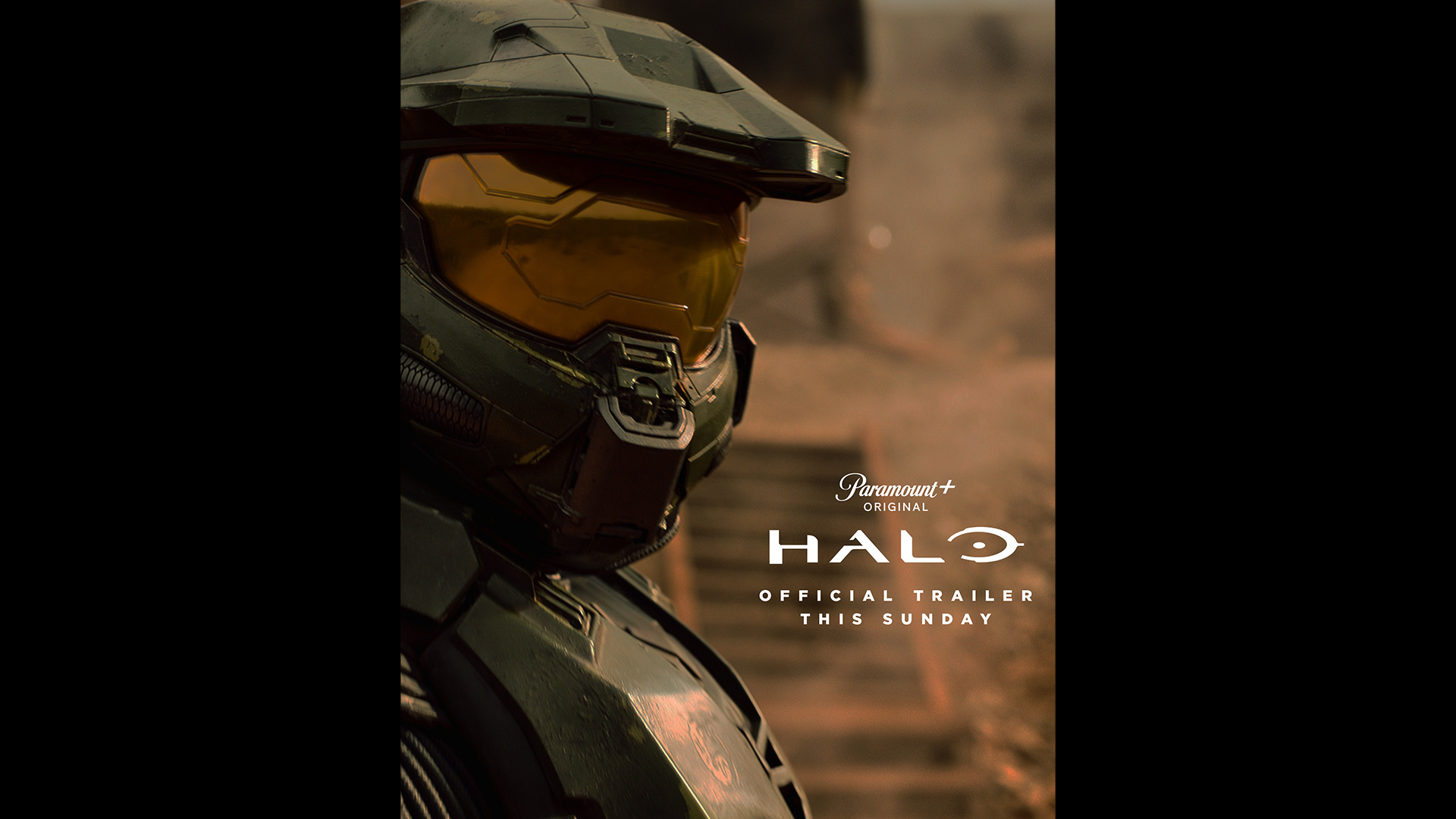
DEBRIEF 001
A new beginning is upon us...
Halo the television series is coming soon, and we promised at the end of last year that the time was fast approaching for us to spin up the slipspace drive and talk about what this monumental endeavor means for the future of the Halo universe. That time has now come.
So, strap yourselves in, Spartans - we've got a lot to cover today! Let’s start things off by throwing it over to our Head of Transmedia, Kiki Wolfkill, who has an update on Season 1!
KIKI: “After all this time, it is an incredible (and almost unbelievable) feeling to be at the point where we are able to talk tangibly about story and characters and setting – and, on top of that, actually show you what we have been up to over these last 'few' years. I feel relief and pride and, admittedly, a degree of trepidation. Making this show has been a labor of love for so many from all over the world and it hasn’t always been easy, but the thing that carried us through is that we care so deeply about making this show for all of you. This statement is true of everyone across the show, from cast to crew, to our partners, to the team here at 343, and so it’s impossible to be just days away from showing you our first official trailer without feeling some pre-game jitters!
Bad pun aside, if you haven’t heard, we are debuting the official trailer for the Halo series on Sunday, Jan 30 as part of the AFC Championship game on CBS and Paramount +. If the Bills/Chiefs game didn’t promise enough excitement, I do guarantee you some Halo goodness (and details I wish I could share today)!
But what else are we up to? We are deep in post-production and finishing on the show. Building a world at the scope and scale of the Halo universe means extensive VFX which is an intensive but awesome process and arguably my favorite part. Melding our sci-fi elements with real people and environments and ensuring they feel grounded and believable is a very different endeavor from creating the virtual environments of our games.
You got a little taste of the work we’ve done on the VFX front with our first look (which we break down below) and you will see WAY more on Sunday, which will be a monumental task to explore in our next blog. Suffice it to say, you will see many familiar Halo elements – some are exactly as you’ve seen before and some you will see through the lens of the incredible creatives involved with the show, but all should resoundingly say Halo to you.
Releasing a trailer at this stage means that not all is completely final, and we will continue to refine and tweak until we are yelled at to put our pencils down, but we are excited to show you where we are.
We’ll continue to keep you updated and hope to start revealing some more peeks behind the scenes soon! In the meantime, we want to share more details with you behind the intent and principles behind the Silver Timeline and what that means for Halo.
We hope you enjoy the ride and we’re excited for what is to come! Thanks for coming on yet another epic Halo journey with us…”
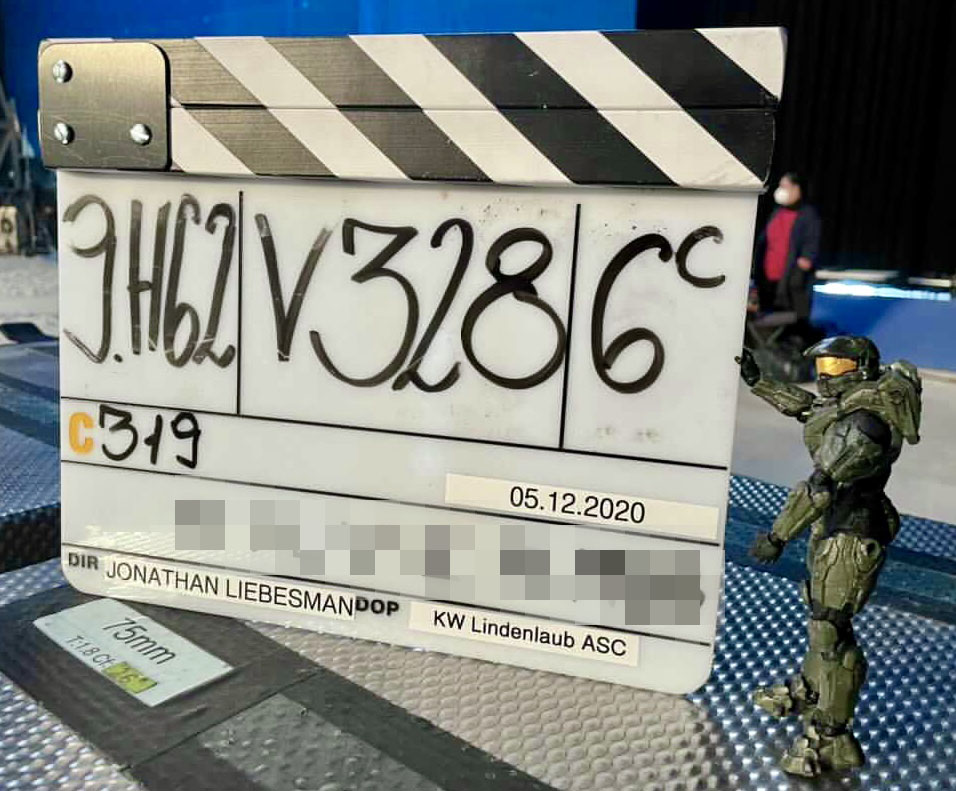
THE SILVER TIMELINE
This brings us neatly to the main topic of our first Silver blog, the ‘Silver Timeline’ itself.
‘Silver’ is the name of the central Spartan fireteam, and, of course, a nod to the ‘silver screen’ too – naturally, the name stuck. The Silver Timeline is a unique vision of the Halo universe that contains and embraces many key elements of the core canon that has spanned the last two decades, but with relevant contextual and narrative details that diverge in ways appropriate (and necessary) to the storytelling opportunities presented by the TV medium and our collaboration with creative partners.
To tell the best Halo stories we can, we want to protect the integrity, simplicity, and future of the core canon, but also not be limited by it when faced with the realities of a new medium and the process of production. As a result, we made the decision to set the Halo television series in an authentic, but independent timeline.
I’m fortunate to be joined by Franchise Creative Director, Frank O’Connor, to delve deeper into this unique vision of the Halo universe.
ALEX: Thank you for joining us today, Frank! Let’s start from the top. Broadly, what is the Silver Timeline and what does it mean for Halo?
FRANK: "We’ve been working on the idea of a Halo TV series for a long time, but one of the first things we realized when we started working with writers and directors was that there were some real dangers of mapping a totally different medium – games – to a linear narrative format, TV or movie for that matter. Not just because of the differences in approach and perspective that make sense for each medium, but also because we want to make sure that we’re not forcing either the game or the show to go in completely unnatural directions.
By the same token, Halo’s core canon is extremely important to us and our fans, and we wanted to think of the simplest and most productive way to make sure we didn’t ‘break’ either medium by trying to force square pegs into round holes. The idea of the ‘Silver Timeline’ kept resurfacing throughout that process. We could compare the choice we landed on to other IPs, but that might set faulty or negative expectations and would likely oversimplify our intent.
Basically, we want to use the existing Halo lore, history, canon, and characters wherever they make sense for a linear narrative, but also separate the two distinctly so that we don’t invalidate the core canon or do unnatural things to force a first-person video game into an ensemble TV show. The game canon and its extended lore in novels, comics, and other outlets is core, original, and will continue unbroken for as long as we make Halo games.
To be clear: these will be two parallel, VERY similar, but ultimately separate timelines whose main events and characters will intersect and align throughout their very different cadences.
The TV show timeline – the ‘Silver Timeline’ – is grounded in the universe, characters and events of what’s been established in core canon, but will differ in subtle and not so subtle ways in order to tell a grounded, human story, set in the profoundly established Halo universe. Where differences and branches arise, they will do so in ways that make sense for the show, meaning that while many events, origins, character arcs, and outcomes will map to the Halo story fans know, there will be surprises, differences, and twists that will run parallel, but not identically to core canon.
A simplistic example of both the kind of difference – and an underlying reason for that difference – will be apparent from the first episode, that the ‘coincidence’ of Chief and Cortana simply stumbling across the Halo ring is gone. Many of the same established events will drive the story to the same places and outcomes, but how they get there will feel markedly different, but logical to the events described. This means that for deep lore fans, there will be familiarity and surprise, but newcomers will end up with a very similar understanding of the characters’ origins, ambitions, and motivations – as well as places, names, and ideas."
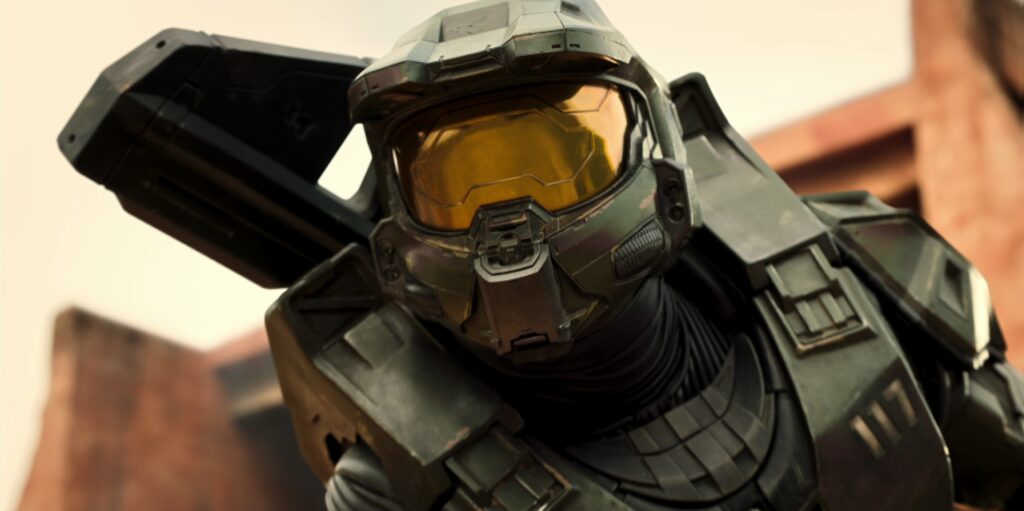
ALEX: This new, independent branch of canon is obviously a huge decision, but one that affords some interesting new ways to frame ‘tentpole’ moments and events from throughout the series without having to deal with which is ‘definitive.’ And we get to bring more obscure things from the expanded universe to the foreground as well!
FRANK: "Even in the existing core canon, we have some elements that were framed as sort of set-in-stone as we join Halo: Combat Evolved in medias res, so events that have shaped our well-known characters have already happened. Because the show can play with both space and time in a way games often can’t, we have the chance to go back and explore those origins and events from the perspective of both the audience and the characters within the show.
Most Halo lore fans are aware of the origin story of Chief, the Spartan program, and the machinations and outcomes of that program, but haven’t seen it through the eyes of the kids who experienced it, or the adults tasked with making it happen. We get to do that, and also tell a story about a fairly dark period in the Halo universe, and unblinkingly look at the ethics and morality – but with the advantage of perspective. We know why the SPARTAN-II program happened and also why it may have been necessary, but the moral ambiguity of both events and characters is going to act as a prism for how we view things we thought we already knew."
ALEX: No doubt there are certain challenges that come with working on a Halo story for a television show compared to the games, books, and other media – I would imagine the needs and overall development process must be quite different, right?
FRANK: "There are a few things that feel similar to building a huge game. Production logic and process is often similar, and of course we share lots of material – from ship designs and blueprints, to character bios, sound effects, and all the nuts and bolts of a shared universe.
Covid hit both projects hard and both teams worked through incredible challenges to deliver a major entertainment event. But we also had to embrace the vast differences in medium – perspective, art, craftsmanship and approach, and where a video game is a personal, almost solipsistic experience for the player, a show is a wholly different type of storytelling canvas, where comprehension, understanding, empathy, and narrative strands are hugely different to the agency, empowerment, control, and challenge of being one of the heroes in a story.
If you try to mash those things together, you’re doing a disservice to both. Regardless of how the two things are received, nobody wants a compromised or diluted thing set in a world they love."
ALEX: We’ve done some live-action work before with the likes of Halo 4: Forward Unto Dawn and Halo: Nightfall, which both remain part of core canon. What’s made the process with the Halo television series similar or different to these projects?
FRANK: "The main similarity – aside from the realities of filming, casting, and post-production – is the excitement of working with great creatives to visualize and build physical versions of virtual things, but the difference in scale is beyond exponential. We have built Warthogs and spaceships and places before, but not multiple worlds and the narrative pathways between them.
So yeah, in a freeze frame, it looks similar to live action stuff we’ve done before, but the sheer magnitude of difference is dizzying."
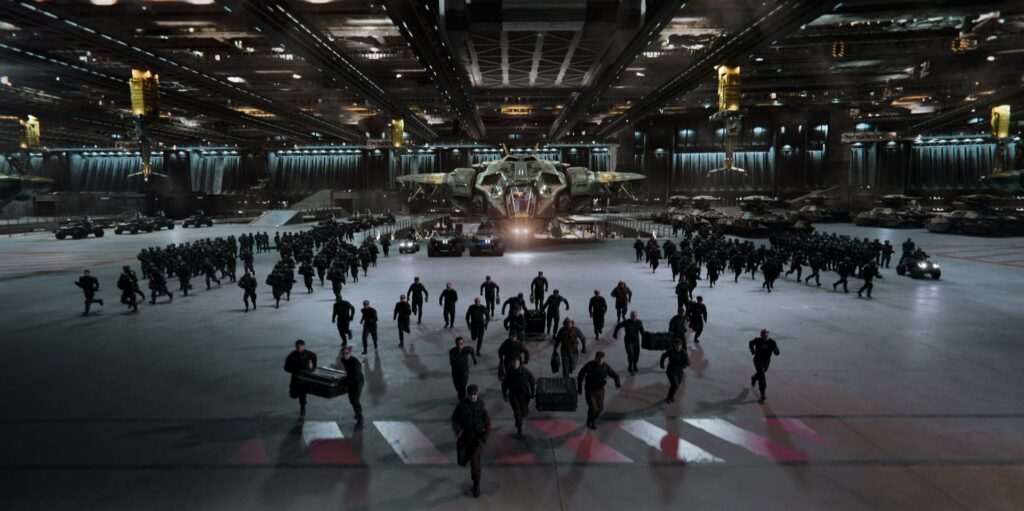
ALEX: On a similar note: will there be any crossover between the Silver Timeline and core canon? Could something from the Silver Timeline (say, for example, a new vehicle model) be integrated into a future core canon project?
FRANK: "Absolutely – and ideally both ways. The show certainly is built on the shoulders of Halo’s canonical giants. The history, the aesthetic, the narrative underpinnings, and so on, are all directly aligned with, inspired by, based on, or aligned with existing Halo stuff.
Of course, there are tweaks. Armor has to be practical, for example, and Warthogs have to be able to pull off stunts as well as look right, but story differences create great opportunities to make new things that could potentially feature in future games – not just objects or effects, or designs, but people, events, inventions, and more. These are two different Narratives, but they are profoundly connected by the same DNA and the intention is to keep making the two the best they can be, not to distract from, avoid, or ape each other. But they are both distinctly Halo and those opportunities are boundless."
ALEX: Of course, unbound from core canon, the context and creation of the Silver Timeline also offers some great new opportunities as well as the Halo franchise continues to evolve...
FRANK: "Yes, we’ll see how we can take advantage of the show to bring interesting or appropriate stuff into the core canon – and again, sometimes they will align organically just because we’re telling ‘true’ Halo stories in each.
But a great reverse example is how shield alerts can bring more intense drama to a scene in television – there will be lots of interesting moments and ideas like that from the show, that can make sense in future game content. But again, it needs to be rational and appropriate. We won’t shoehorn things in to force that function."
ALEX: This has gotten us to really look at what Halo is beyond the matter of canon as well. We’ve done a lot of exploration and analysis of the legacy of this franchise and what the quintessence of Halo really is. Twenty years on, what are some of the core themes and ideas that really make a Halo story and serve as some of the pillars of the show?
FRANK: "For me, it’s heroism, nobility, honor, and the idea of one person making a difference. But the beauty of Halo is that it’s a rich enough source for people to see all sorts of themes in it that are important to them. Mystery, horror, action, romance, family – all the universal story themes that make up any strong narrative or world-building are there to be explored and experienced.
The show being a story that isn’t presented automatically through a single lens (or visor) means that the ideas and events that are explored in the extended fiction – the novels, comics, even ARGs and live action commercials – can now be expanded upon, explored, and put directly in a single connected story and timeline. Again, lots of familiar, but also plenty of surprises and differences."
ALEX: Thank you so much for your time, Frank! Before I let you go, do you have any parting words? What are some of the things that you’re most excited about seeing in the Halo television series?
FRANK: "I always have to remember that not everyone who plays Halo has read The Fall of Reach, or The Thursday War, so when I get excited about the idea that Halo is a vast universe of characters and adventures, I tend to forget that even hardcore game fans may not be aware of the rich history and politics and events that are embroidered into that universe. So I’m excited of course to share new stuff with both kinds of fans, but also to share things I’ve become attached to with old and new audiences alike.
Halo isn’t just a game, it’s a literal galaxy of people, history, mystery, and drama. And we can explore all that as well as create new stories."

We hope this provides a clear answer to the fundamental questions about the canonical status of the show.
In summary: Core canon will continue, unimpeded and unfettered by differences and divergences in the Halo television series. Likewise, the Silver Timeline will continue to draw from and explore existing elements, events, relationships, and more from the core canon, evolving in-parallel while retaining the themes that serve as pillars of Halo’s identity.
Taking steps to develop a complex hierarchy to ‘grade’ the canonicity of elements of the show was obviously not desirable, and so having two distinct branches – core canon and the Silver Timeline – allows them to be clearly distinct and self-contained, without friction that might affect the grand, compelling universe we’ve come to know and love over the last two decades.
Exploring the themes, characters, and events of the Halo universe with this new lens enabled us to ensure that neither core canon nor the television show had to be constrained, distorted, or retconned, instead opening greater possibilities and providing clarity of intent that would have otherwise led Halo fans to develop specific expectations about what would be ‘loyally’ adapted and what wouldn’t.
Our twenty-year history has given us a wealth of amazing ingredients to deliver on fan-favorite characters, ideas, and moments, while also retaining the ability to surprise with a new spin on things. The spirit of Halo is retained and accentuated in exciting new ways while telling a new story from a greater variety of perspectives.
As a result of this accord, we hope this will be a series that resonates with Halo fans (casual, hardcore, and everything in-between), general gamers, sci-fi and action lovers, and people who enjoy shows with high-stakes character drama.
FIRST LOOK
We debuted a first look trailer for the Halo television series during The Game Awards in December 2021, showcasing some of the incredible work that has made this series – at long last – a reality.
For those who need a refresher, let’s take another look!
As Kiki mentioned earlier, the next trailer will be shown at the AFC Championship game on January 30, but for now, however, we wanted to explore some of the key moments this trailer depicts with the help of Kenneth Peters, Senior Franchise Writer.
ALIEN(?) SKIES
We open the first look trailer with Dr. Halsey’s personal Zheng He-class courier crossing an alien sky. This planet will be both familiar and alien to long-time fans. We have spoken before about how Silver will change up a few locations and events, and this is one of them. It’s a bit too early to go into specifics, but one clue is that it is not Harvest.
As a small detail note for Halopedia editors, Dr. Halsey has named her ship the ‘Endymion II,’ either from nostalgia, or to poke at the ONI censors who labor to keep her out of official UEG records.
We’ll be showcasing the ship itself at a later time, but it is an interesting example of taking a vehicle we had ‘penciled in’ for use in the Halo franchise before this project started, and then developed into a fully realized vehicle and physical set for the show! You may be seeing this particular design appear in future games and fiction, as it’s not a Silver-specific vehicle. It just happens to have been visualized there first.
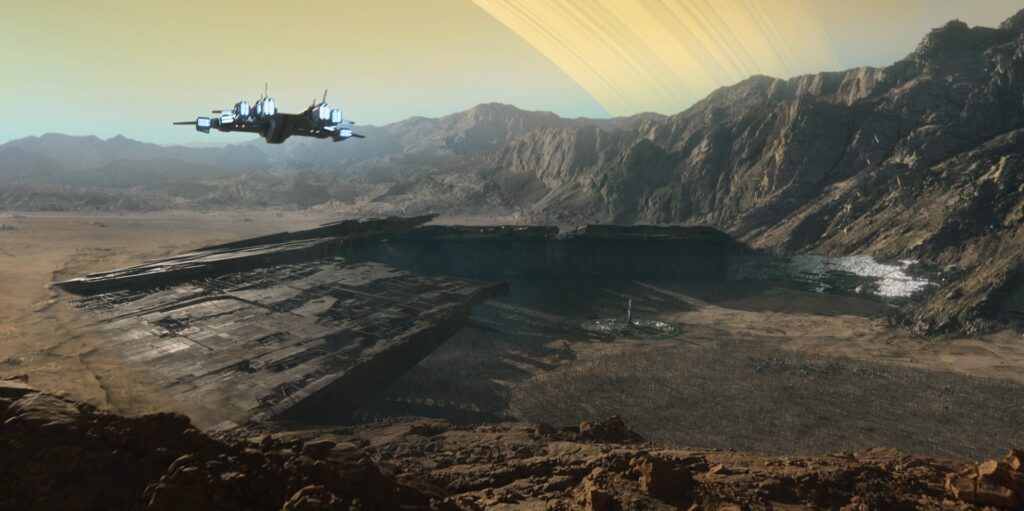
COMMAND-AND-CONTROL
This shot places us on Reach at one of the main UNSC Navy military reservations on the planet, centered on WHITE TOWER, a FLEETCOM operations center and relay hub. As the name infers, it is an old location, and only started to grow and expand with a sizable civilian contractor population as the Covenant War demanded an escalation in UNSC activity.
The personnel of this facility support ONI (and UNSC) operations both on Reach and in the colonies, which includes threat assessment of Covenant incursions and Insurrection activity. This location is one of the story hubs in our series and is where the Spartans of Silver Team are briefed, maintained, and re-equipped for operations in the ever-fraying outer regions of UEG space. The safety of this area is paramount, and security is enforced by a range of Navy and Marine assets, both on the ground and in the skies.
We worked closely with the art team to provide reference and architectural details that would help tie it in with locations seen in Halo: Reach (notably, New Alexandria) and Halo: The Fall of Reach Animated Series.
The mix of water, metal, concrete, rock, and snow provides an excellent canvas to showcase and contrast the military functionalism of the UNSC, the beauty of Reach, and humanity reaching upward to the stars. The art team looked at fortresses, military bases, and castles (in addition to many, many images of game reference) to build a cinematic Halo location that universally evoked feelings of strength, safety, and security.
For Halo fans, this location does exist on Reach (albeit, in a glassed state), but does not have the same level of plot significance as it does in the show.
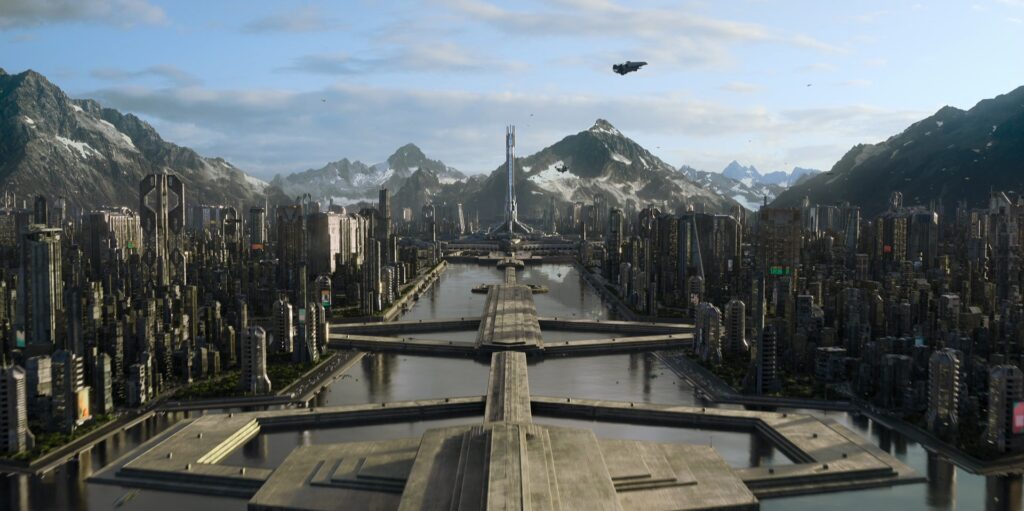
DR. HALSEY
Dr. Halsey is a fantastically complex character, and Natascha McElhone’s investment and interest in the character was evident from the first time we met. Her questions about Halsey as a scientist, mother, and creator of super-soldiers were always on-point, as was her commitment to exploring the relationship dynamics with John, Jacob Keyes, Miranda Keyes, Margaret Parangosky, and Cortana.
Natascha was a critical collaborator as we explored Dr. Halsey in spaces and situations that have previously only been inferred in the books and game cinematics. Everything from the design and layout of her lab, to the books and artifacts in her quarters, was informed by Natascha and her interest in science, technology, and humanity. Saying much more would be too large of a spoiler...
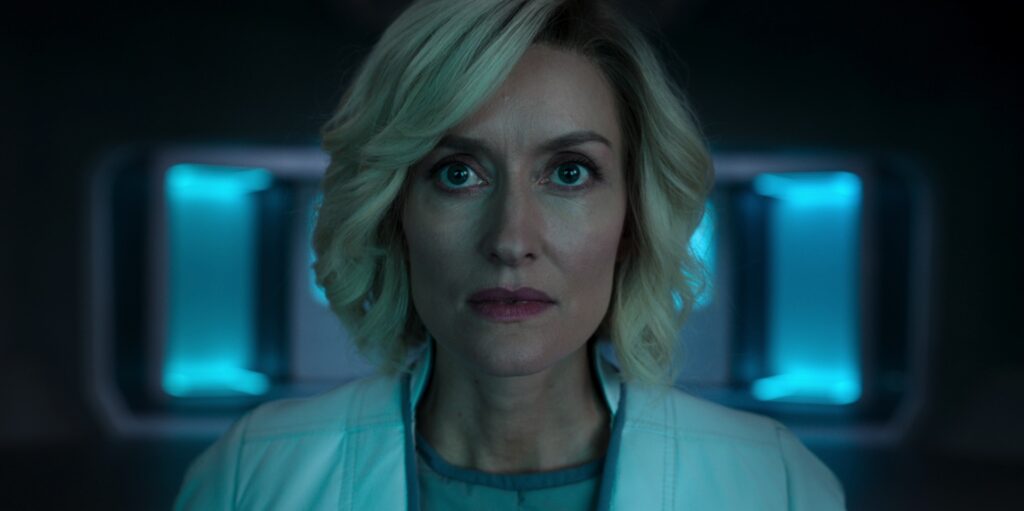
HIGH CHARITY
The design of High Charity in the show was a hugely collaborative affair and was only made after a great deal of discussion that touched on many subjects and concerns. For casual fans, the differences may seem mostly cosmetic, but be assured this is an elaborately detailed model.
For this production, we explored ideas for different spaces within the station, ranging from the inner sanctums of the Prophets to areas devoted to entirely martial endeavors. Inspiration for the station was taken from Halo 2 concept art, sea life, cathedrals, and ultra-modern airports.
This is a good example of where we diverged from previous appearances for artistic and practical purposes, and the changes do not cross back over into the games.
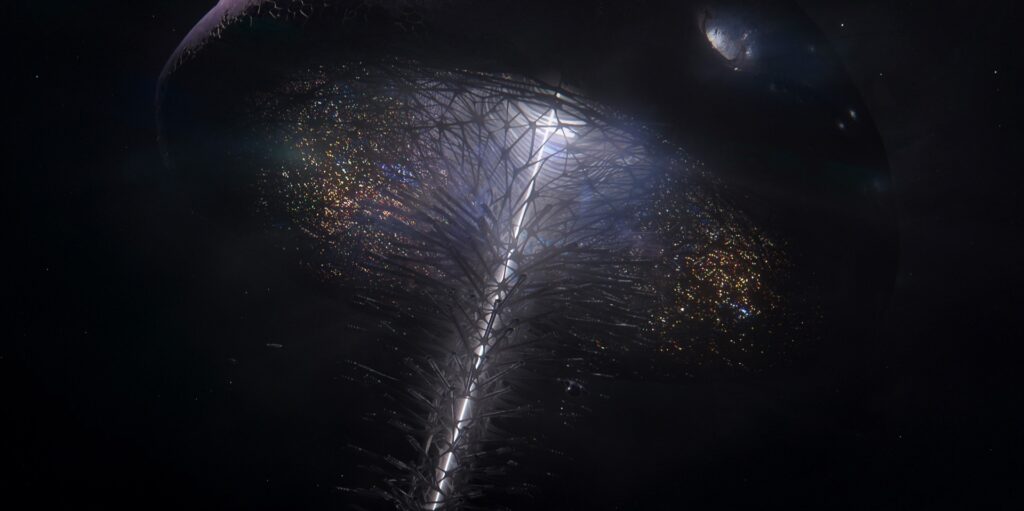
THE RUBBLE
A familiar sight, in a way, for people who have seen it in their heads when reading Halo: The Cole Protocol, the Rubble is depicted for the first time in its full glory (as we see only a few sections in the Halo 2 Anniversary Terminals). As its appearance suggests, its survival is the result of a divergent timeline and series of events. Core details are unchanged, and those familiar with The Cole Protocol may see familiar locations in the interior shots!
The connection between Madrigal and the Rubble is, if anything, even more tightly coupled than in the novels, and allows us to explore a rich tapestry of life for rebels, malcontents, and pirates that live apart from the UEG and other Outer Colony pioneers.
It is here that Soren has his pirate lair, and those who have read the short story ‘Pariah’ in Halo: Evolutions may have a leg up in understanding his backstory, as that is directly relevant!
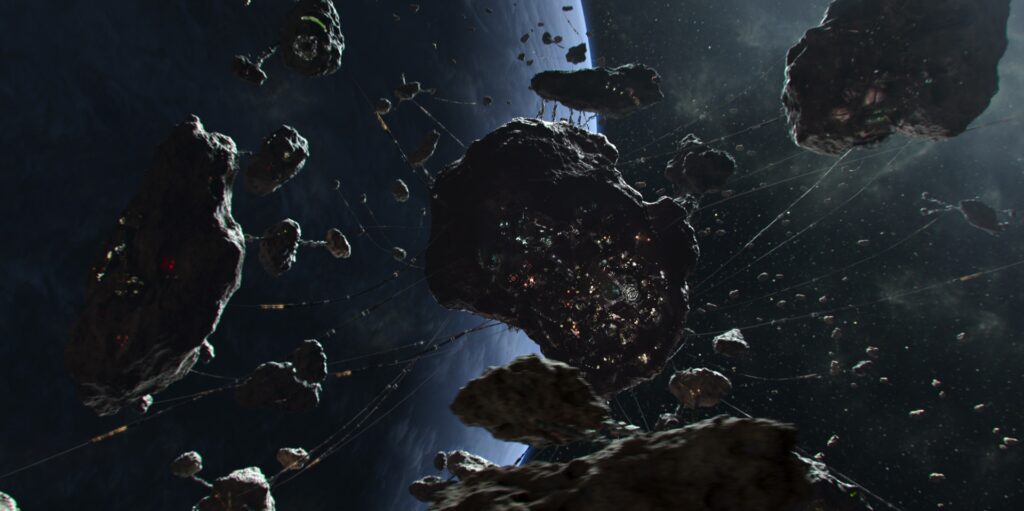
SILVER TEAM
The armor and weapon design of Silver Team is one of the most interesting examples of collaboration and crossover. The helmets for Riz and Kai were concepted and sculpted at 343 for a specific armor core style, while Vannak has a customized version of EOD that will be familiar to many Halo fans.
The suits in the show are custom-made, practical, and very robust. It would probably have been easier in many ways to use CGI compositing over the actors, but actually wearing armor grounds the Spartans in the environment and provides interesting limitations that gives them a distinctive way of moving and fighting. You can get a preview of these helmets in the recently released The Art of Halo Infinite, in fact.
The designations, backgrounds, and names for the Spartans were pulled from our internal documentation for the Spartan-II program, though I cannot reveal what their counterparts in the game and book stories are (or are not) up to, at this time, on pain of death.
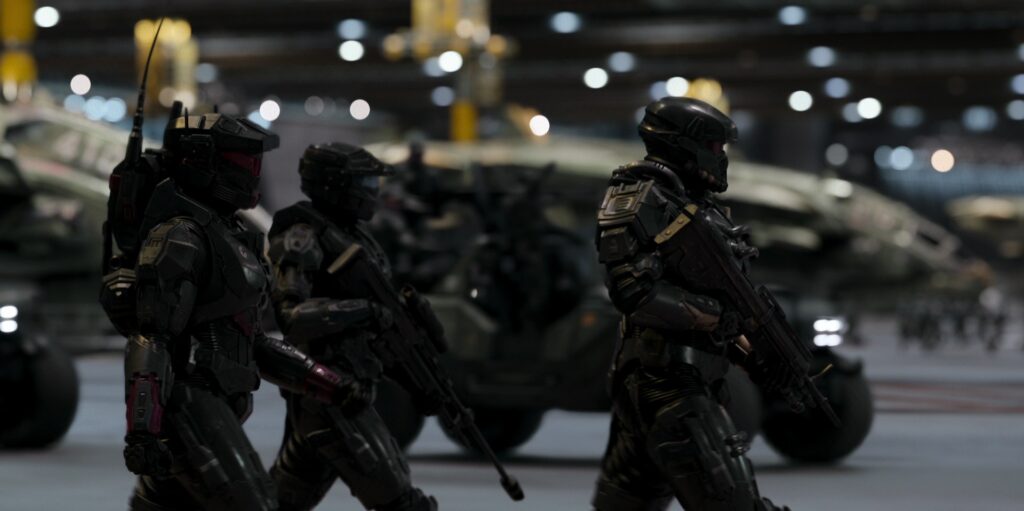
END OF DEBRIEF
And, with that, our first Silver Debrief comes to an end – the first of many to come!
We hope that this has been an interesting, exciting, and above all transparent and open look into the context in which some major decisions have been made and the opportunities they afford the Halo franchise.
Don’t forget to tune into the AFC Championship game on CBS and Paramount+ on Sunday, January 30, for our next trailer.
As it has oft been remarked when standing at a precipice such as this: we’re just getting started!

